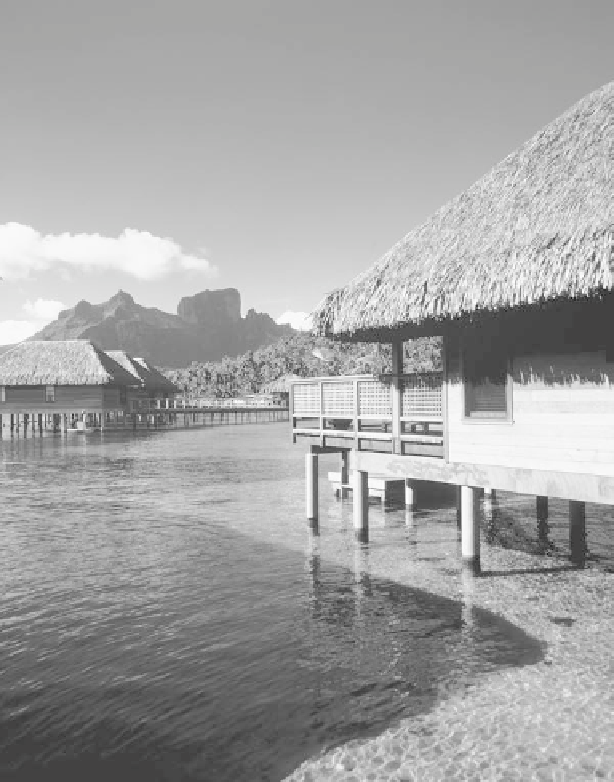Travel Reference
In-Depth Information
Designed to be
unobtrusive, the Hotel Bora
Bora does not overwhelm
its surroundings. It feels
like a genuine Tahitian
village with a South Seas
atmosphere. In keeping
with the use of indigenous
materials and styles, the
80 thatched-roof
bungalows form a
villagelike grouping of
informal, open-air
structures. Incorporating
regional in
uences, the
design of the Hotel Bora
Bora affords great economy
in both construction and
operation.
Photocourtesy
ofWATG.
Figure 16.2 provides a graphical summary of the above tourism planning and development process
and illustrates the increasingly detailed nature of the process as we move from stage to stage. The
advantage of utilizing such a model is that it requires the planner to view the total picture and guides
the thinking process. Although no model can depict all interrelated facts of a planning process or
eliminate all guesswork, such a model deserves inclusion in the initial phases of planning as a tool that
helps to order, coordinate, and control the process.
Table 16.1 shows an integrated approach to planning. Again, it serves as a guide to asking the right
questions and making sure that the process is complete. It also illustrates that there are a number of
approaches to tourism planning. There is no single magic approach.
GOALS OF TOURISM DEVELOPMENT
Tourism planners should aim for
ve
goals of tourism development
:
1.
Providing a framework for raising the living standard of the people through the economic bene
ts
of tourism
2.
Developing an infrastructure and providing recreation facilities for visitors and residents alike
3.
Ensuring types of development within visitor centers and resorts that are appropriate to the
purposes of those areas










Search WWH ::

Custom Search